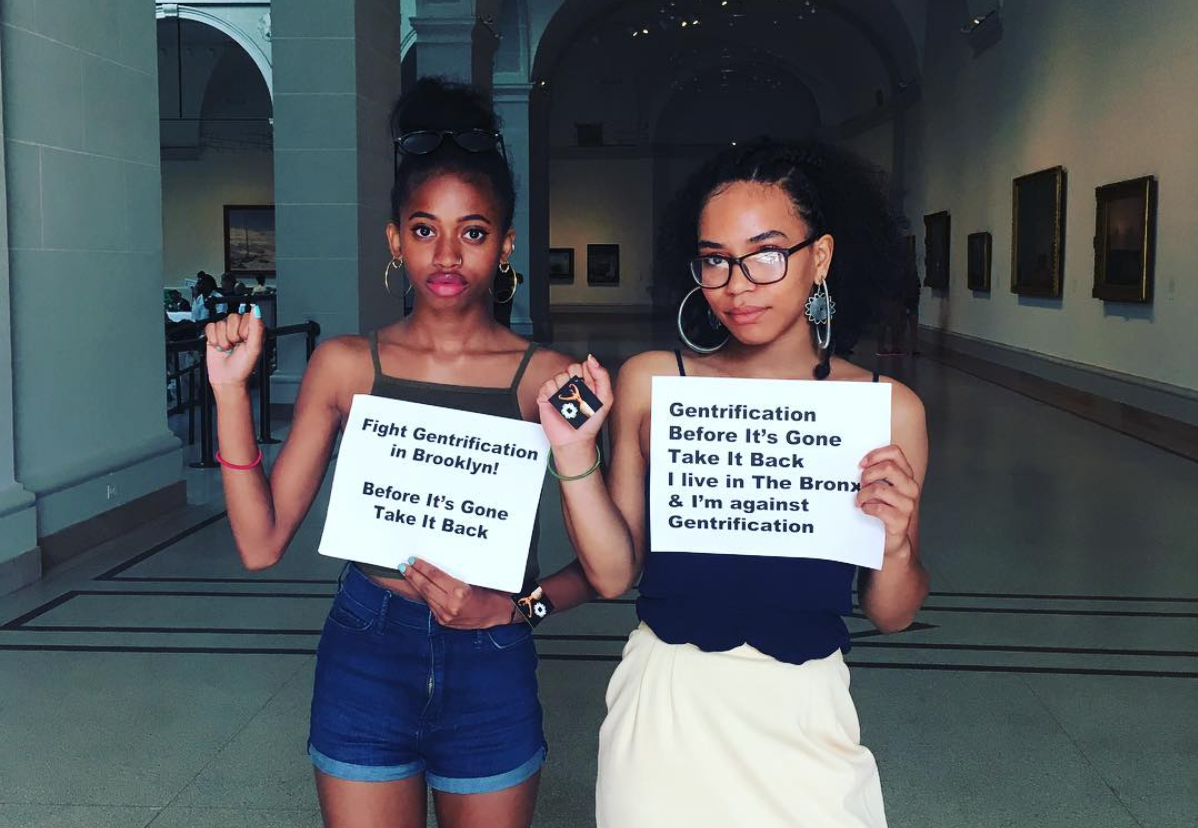11 Ways To Fight Against Gentrification & Displacement In Your Brooklyn Community



Sunday, July 24th, 2016, the Brooklyn Museum co-presented an extremely engaging and enlightening “Brooklyn Community Forum on Anti-Gentrification and Displacement.” In collaboration with Artists of Color Bloc (cultural workers addressing the intersectional conditions of artists, workers, and communities of color), B.A.N (Brooklyn Anti-gentrification Network), MTOPP (The Movement to Protect the People), and select artists from the exhibition Agitprop (a movement connecting contemporary art devoted to social change with historic moments in creative activism), the museum brought together a diverse group of attendees to discuss the red-hot topic of gentrification.
The Brooklyn community desperate to discuss gentrification issues shared our initial post advertising this event over 12,000 times. Originally scheduled for Sunday, July 10th, 2016 from 12 to 5pm, the Brooklyn Museum was forced to postponed the event because of air conditioning problems. Two weeks later, it hosted an entire afternoon of panel discussions with Q&As, cultural performances, small-group conversations, networking opportunities, and more.
“We need to understand that gentrification isn’t about beautifying neighborhoods and making them safer. It is the systematic displacement of people, predominately low-income and of color,” contends Yazmin Colon, founder of Educated Little Monsters. The group is also known as Monsters of Brooklyn, an all black and brown youth movement bringing forth social and cultural truths through the arts.
Displacement is not a new phenomenon. “For 300 years, billions of dollars worth of Native American lands were “granted” to whites alone. Other huge blocks of land were “sold” to whites for only $1 per acre, asserts the Reclamation Project in its work, “How White Folks Got So Rich: The Untold Story Of American White Supremacy.
Tom Angotti, Director of the Hunter College Center for Community Planning & Development, moderated the panel: Successful Strategies and Stories on Rezoning and Development. He reminded us that the federal government subsidized low-cost loans for white Americans to become first-time homeowners in suburbia. With white flight to the suburbs in the 1950s and 1960s, resources and businesses followed, leaving urban areas deprived.
Today, luxury condos and high rises are going up in Brooklyn while the homeless population rises. Long-time Brooklynites fight tirelessly to keep communities intact, neighborhoods affordable, small businesses profitable, and services coming in; while wealthy developers, power brokers and bankers, redistribute monies, rezone neighborhoods, and redirect residents.
After listening attentively to the panels, asking questions of the experts, and networking with attendees, we put together 11 ways to continue the fight against gentrification and displacement.
It is worth noting ordine cialis on line http://www.devensec.com/sustain/Transformations_Case_Study_FINAL_10-11-11.pdf here that almost 70% of the men.
1. Don’t just complain – take action now! Believe strongly that you can make a difference. Robert F. Kennedy said, “The purpose of life is to contribute in some way to making things better.”
2. Educate yourself on community planning, urban policy, and zoning:
3. Start a block or resident association or revitalize an existing one.
4. Regularly attend community board meetings and voice your opinion. Find your community board here.
5. Vote and not just for president but for local representatives: governor, mayor, city council, state assembly, members of congress, borough president etc.
6. Hold politicians accountable. Know their names and how to contact them. Visit them and/or call them, volunteer to work on a committee or project.
7. Support small businesses in the area.
8. Join an ant-gentrification organization. Choose one mentioned above or find one online that better fits your needs.
9. Want to see your neighborhood and its history preserved – look into the process of landmarking.
10. Know where your money is going. Support corporations that are socially responsible and positively invest in low-income and work-class communities – not displacement.
11. Be persistent in your fight. Patience, persistence and perspiration make an unbeatable combination for success, advises Napoleon Hill.

Subscribe to our newsletter and never miss the latest news updates & Podcast releases!
